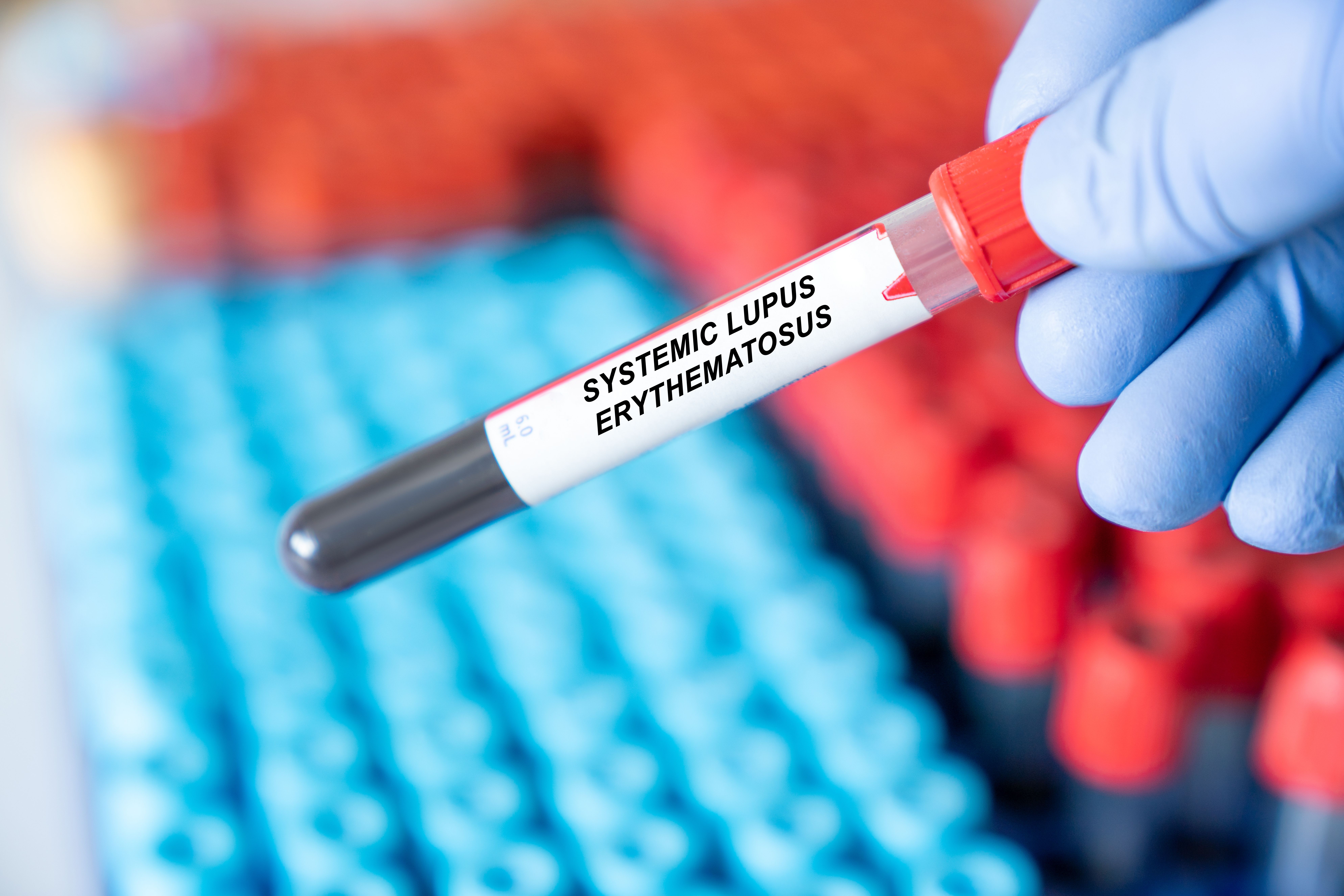- Bone Health
- Immunology
- Hematology
- Respiratory
- Dermatology
- Diabetes
- Gastroenterology
- Neurology
- Oncology
- Ophthalmology
- Rare Disease
- Rheumatology
Biosimilar Rituximab Safe, Effective for SLE After Switching
A study found that switching from rituximab to biosimilar CT-P10 is safe and effective for patients with systemic lupus erythematosus (SLE).
A study found that switching from rituximab to biosimilar CT-P10 is safe and effective for patients with systemic lupus erythematosus (SLE). | Image Credit: luchschenF - stock.adobe.com

Switching from originator rituximab to biosimilar rituximab (CT-P10) was found to be safe and effective in patients with systemic lupus erythematosus (SLE), according to a study published in the European Review for Medical and Pharmacological Sciences.1
SLE can be defined as an autoimmune disease where the body attacks healthy tissue, impacting the skin, joints, kidneys, brain, and other organs.2 Epidemiology of SLE is not quite clear but evidence suggests the condition is associated with genetics, environmental factors, hormones, and medications. Symptoms of SLE can vary widely, but often include joint pain, fatigue, skin rashes, and fever.
Treatment for SLE ranges but widespread evidence has found decreased B-cell counts result in positive effects through the induction of T cells that leads to the production of cytokines.1 The originator rituximab was developed to induce apoptosis of B cells by killing B cells mediated by complement and antibody dependent cellular cytotoxicity by antagonizing CD20.
Celltrion developed the first rituximab biosimilar, and it received approval in 2017 by the European Medicines Agency (EMA).3 The drug was originally made to treat non-Hodgkin lymphoma, chronic lymphocytic leukemia, rheumatoid arthritis, and granulomatosis with polyangiitis. This was the first biosimilar to receive market approval from the EMA and its usage approval is available for all indications of originator rituximab.1
“The objective of our study was to analyze the efficacy and safety data of treatments with originator rituximab and CT-P10 molecules intra-comparatively,” the study authors stated.
Disease activity was assessed with the Systemic Lupus Erythematosus Disease Activity Index 2000 (SLEDAI-2K). SLEDAI-2K is a weighted scoring system that accounts for various clinical and laboratory factors associated with SLE to assess disease activity.
Most patients were female (86.4%), and they had a mean (SD) age of 40.3 (10.6) years. Treatment duration was 35.6 (23.0) months for the originator and 17 months for CT-P10. More than half of the patient population had at least 1 comorbidity present (68.2%), the most common being hypertension (63.6%).
The kidney was considered the most frequently involved organ (63.6%), and ischemic cerebrovascular accident was the most common neurological involvement pattern (22.7%).
SLEDAI-2K scores were 2 and 0, respectively, approximately 3 months before and after the administration of the first dose of biosimilar CT-P10. The SLEDAI-2K scores of the rituximab biosimilar represented a statistically significant difference (P = .027). Three months after the first dose of CT-P10, the SLEDAI-2K score was significantly lower. The analysis identified differences between the SLEDAI-2K score 3 months after the last dose of the originator (median, 2.5) and the score found in patients around 3 months after the first dose of the biosimilar (median, 0.0) (P = .011).
The rituximab originator had an adverse effect frequency during administration of 15.3 per 100 patient-years. Urinary tract infections were of the most common infections contracted (7.7 per 100 patient-years).
During administration of the biosimilar, the adverse effect frequency was 39 per 100 patient-years. Pneumonia was the most common infection among patients, at 19.5 per 100 patient-years.
The limited number of participants and study design limited the results. The duration of follow-up after switching to the biosimilar was shorter than the originator. The study also did not include a control group, and most patients were not in flare during the efficacy evaluation. The COVID-19 pandemic coincided with the time interval of switching.
References
- Ekin A, Mısırcı S, Coşkun BN, Yağız B, Dalkılıç E, Pehlivan Y. The retrospective evaluation of efficacy and safety data after switching from originator rituximab to biosimilar rituximab (CT-P10) in patients diagnosed with systemic lupus erythematosus: a single-center experience. Eur Rev Med Pharmacol Sci. 2024;28(10):3513-3522. doi:10.26355/eurrev_202405_36286
- Systemic lupus erythematosus. MedlinePlus Medical Encyclopedia. 2018. Accessed October 3, 2024. https://medlineplus.gov/ency/article/000435.htm
- Biosimilar approvals. The Center for Biosimilars®. Updated March 22, 2024. Accessed October 3, 2024. https://www.centerforbiosimilars.com/biosimilar-approvals
Eye on Pharma: Sandoz Files Antitrust Suit; Yuflyma Interchangeability; Costco’s Ustekinumab Pick
April 22nd 2025Sandoz's antitrust suit against Amgen, the FDA’s interchangeability designation for Celltrion’s adalimumab biosimilar, and the inclusion of an ustekinumab biosimilar in Costco’s prescription program highlight growing momentum to expand biosimilar access and affordability for patients with chronic inflammatory diseases.
Breaking Barriers in Osteoporosis Care: New Denosumab Biosimilars Wyost, Jubbonti Approved
June 16th 2024In this episode, The Center for Biosimilars® delves into the FDA approval of the first denosumab biosimilars, Wyost and Jubbonti (denosumab-bbdz), and discuss their potential to revolutionize osteoporosis treatment with expert insights from 2 rheumatologists.
Early Success of Adalimumab Biosimilars Featured at AMCP 2025
April 5th 2025High adherence rates, comparable clinical effectiveness, and cost savings have marked the early adoption of adalimumab biosimilars in the US, particularly in formulary-driven transitions, as shown in 2 retrospective studies presented at the Academy of Managed Care Pharmacy annual meeting (AMCP 2025).
Insights from Festival of Biologics: Dracey Poore Discusses Cardinal Health’s 2024 Biosimilar Report
May 19th 2024The discussion highlights key emerging trends from the Festival of Biologics conference and the annual Cardinal Health Biosimilars Report, including the importance of sustainability in the health care landscape and the challenges and successes in biosimilar adoption and affordability.
